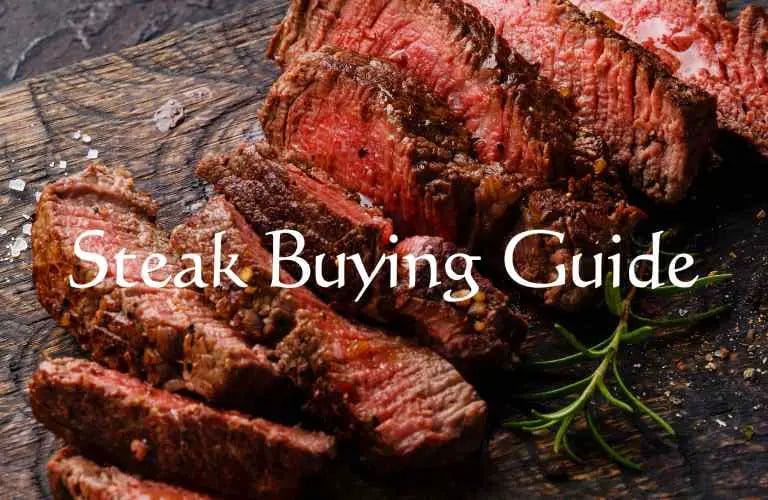When it comes to indulging in a juicy, flavorful steak, choosing the right cut is essential. With so many options available, it can be overwhelming for beginners to navigate the world of steak buying.
However, armed with the knowledge of different cuts, quality grading, and factors affecting flavor and tenderness, you can make informed decisions and elevate your steak experience.
In this comprehensive steak buying guide, we will walk you through everything you need to know to choose the perfect steak.
Understanding Steak Cuts
The first step in selecting a steak is understanding the different cuts available. Each cut comes from a specific part of the animal, and it has distinct characteristics and flavor profiles.
Ribeye
The ribeye is a popular and highly flavorful cut known for its marbling, which refers to the intramuscular fat that gives the steak its tenderness and rich taste.
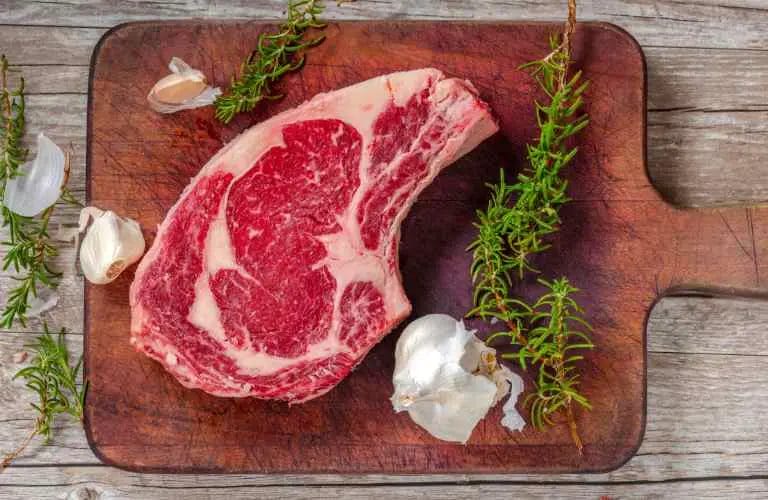
It is typically well-marbled throughout, making it incredibly juicy and flavorful when cooked.
Sirloin
The sirloin is a versatile cut that comes from the rear of the animal. It offers a balance of tenderness and flavor, with less fat marbling compared to ribeye.
Sirloin steaks are known for their beefy taste and slightly firmer texture.
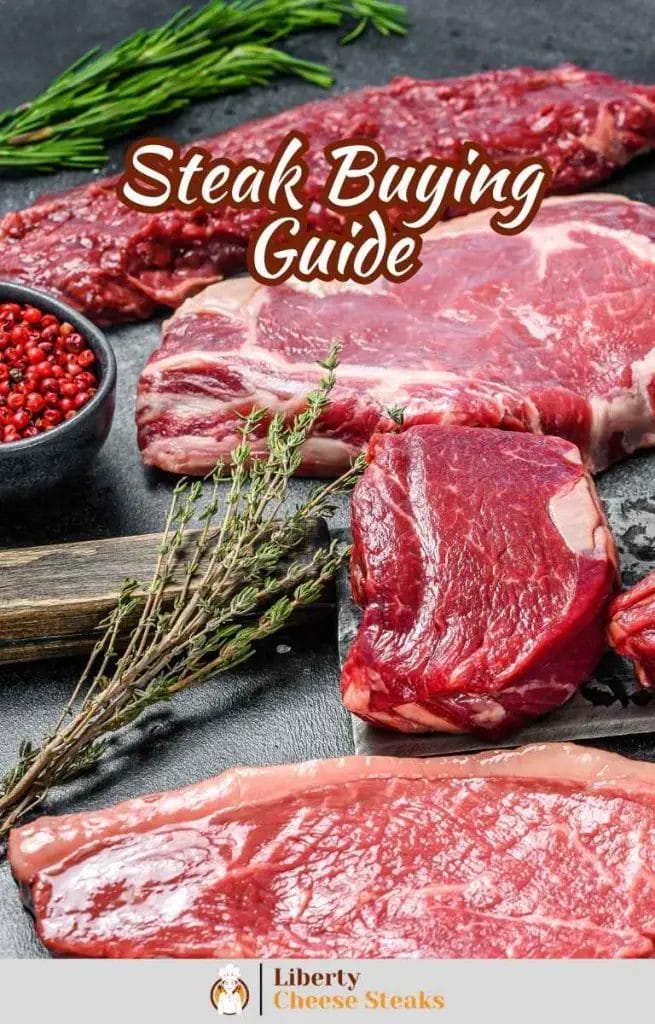
Tenderloin
The tenderloin, also known as filet mignon, is the most tender and leanest cut of steak. It is prized for its tenderness and buttery texture.
While it may have less marbling and a milder flavor compared to ribeye or sirloin, the tenderness makes it highly sought after.
When choosing a steak cut, consider your personal preferences for tenderness, flavor, and fat content. Experimenting with different cuts will help you discover your favorites.
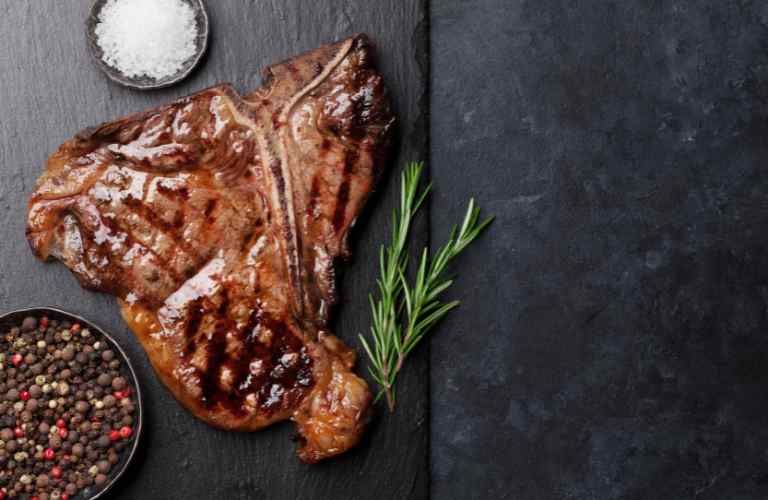
Evaluating Steak Quality
Understanding the quality grading system is crucial in selecting a steak that meets your expectations. The United States Department of Agriculture (USDA) assigns quality grades based on factors such as marbling, maturity, and meat texture.
USDA Prime
USDA Prime is the highest quality grade for beef and is usually reserved for high-end restaurants and specialty markets.
Prime steaks have abundant marbling, ensuring excellent tenderness and flavor. They are the top choice for steak connoisseurs seeking an unparalleled dining experience.
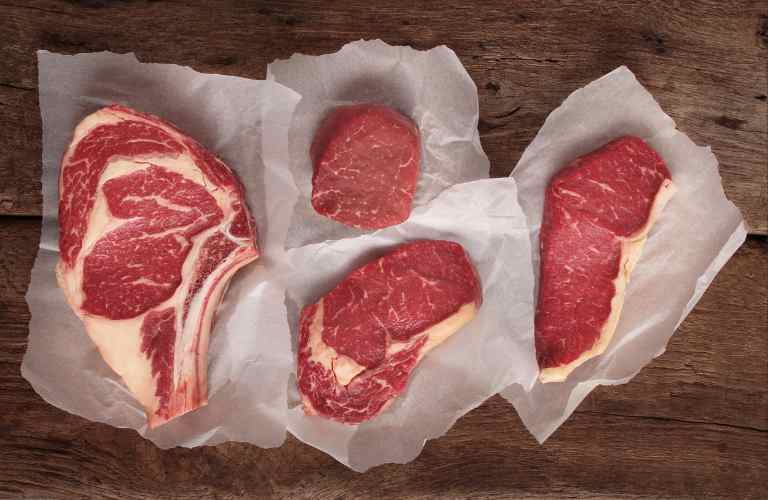
USDA Choice
USDA Choice is the next grade below Prime and is more widely available in supermarkets.
Choice steaks also offer good marbling and tenderness, though slightly less than Prime. They are a popular and reliable option for delicious steaks.
USDA Select
USDA Select is a leaner grade with less marbling. Select steaks are generally less tender and may require careful cooking techniques to ensure they remain juicy and flavorful.
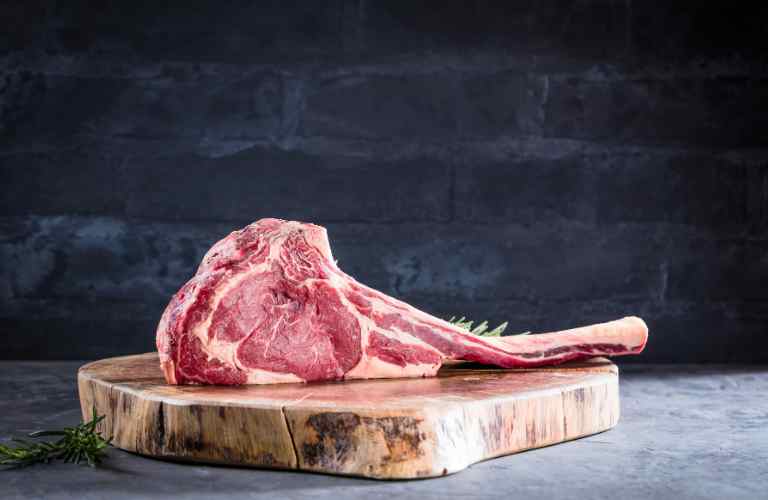
They are a more economical choice while still offering a satisfactory eating experience.
When purchasing steaks, look for the quality grade on the packaging or ask your butcher for clarification.
Keep in mind that the higher the quality grade, the more expensive the steak is likely to be.
Factors Affecting Steak Flavor and Tenderness
Several factors can influence the flavor and tenderness of a steak. Understanding these factors will help you make informed decisions when buying and cooking your steak.
Breed and Feed
The breed of cattle and their diet can significantly impact the flavor of the meat.
Different breeds have distinct characteristics, such as the tenderness of the muscle fibers and the amount of marbling they develop.
Similarly, the animal’s diet, whether grass-fed or grain-fed, can affect the flavor and texture of the steak.
Age and Maturity
The age of the beef can affect its tenderness and flavor. Younger beef tends to be more tender, while older beef may have a richer flavor but require longer cooking times or tenderizing techniques.
Dry-Aging and Wet-Aging
Dry-aging and wet-aging are two common processes used to enhance the tenderness and flavor of steaks.
Dry-aging involves hanging the beef in a controlled environment for several weeks, allowing natural enzymes to break down muscle fibers and intensify the flavor.
Wet-aging, on the other hand, involves vacuum-sealing the meat to enhance tenderness without the additional flavor development.
Both methods can result in delicious steaks, but dry-aged steaks tend to have a more pronounced flavor profile.
By considering these factors, you can choose steaks that align with your taste preferences and desired eating experience.
Understanding Steak Labels and Certifications
When browsing through the meat section at the grocery store or visiting a butcher, you may come across various labels and certifications. Understanding these labels can help you make informed choices about the steaks you purchase.
Organic, Grass-Fed, and Grain-Fed Designations
Organic:
Organic steaks come from animals that have been raised without the use of antibiotics or growth hormones.
The animals are fed organic feed and have access to pasture. Choosing organic steaks can be a good option if you prefer meat from animals that have been raised under strict organic standards.
Grass-Fed:
Grass-fed steaks come from cattle that have primarily been fed a diet of grass or forage.
These steaks tend to have a leaner profile and a distinct flavor. Grass-fed beef is often praised for its perceived health benefits and environmental sustainability.
Grain-Fed:
Grain-fed steaks come from cattle that have been fed a diet primarily composed of grains, such as corn or soy.
This feeding method is typically used to enhance marbling and tenderness in the meat. Grain-fed steaks are known for their rich flavor and juiciness.
Certified Angus Beef and Specialty Certifications
Certified Angus Beef (CAB):
CAB is a widely recognized and reputable certification that ensures the beef meets specific quality standards.

Steaks with the CAB label come from Angus cattle and must meet strict criteria regarding marbling, tenderness, and maturity. Choosing CAB steaks can give you confidence in the quality and consistency of your beef.
Other Specialty Certifications:
Apart from CAB, there are other specialty certifications that focus on specific aspects of beef production, such as breed, production methods, or geographical origin. These certifications can offer additional insights into the characteristics and quality of the steaks you are considering.
By paying attention to labels and certifications, you can align your purchasing decisions with your preferences for animal welfare, environmental impact, and overall quality.
Shopping for Steaks
Now that you have a better understanding of steak cuts, quality grading, and labels, it’s time to put your knowledge to use when shopping for steaks.
Tips for Choosing Steaks at the Grocery Store
- Look for steaks with good marbling. Marbling is the white fat that is evenly distributed throughout the meat, and it contributes to tenderness and flavor.
- Check the color of the steak. It should be bright red, indicating freshness.
- Assess the texture of the meat. It should be firm and resilient to the touch.
- Consider the thickness of the steak. Thicker cuts generally allow for more control over the cooking process.
Benefits of Visiting a Local Butcher
If possible, consider visiting a local butcher shop for your steak purchases. Butchers often have a wealth of knowledge and can provide personalized recommendations based on your preferences.
They can guide you through different cuts, offer cooking tips, and even custom-cut steaks to your desired thickness.
Online Resources and Reputable Suppliers
In the digital age, online shopping for steaks has become increasingly popular. Many reputable suppliers offer high-quality steaks that can be delivered to your doorstep.
Look for well-established companies with positive customer reviews and a commitment to quality and freshness.
Online resources such as customer reviews and descriptions can help you make informed choices when buying steaks online.
Conclusion
Choosing the perfect steak doesn’t have to be an intimidating task. By understanding different cuts, evaluating quality, and considering various factors, you can make informed decisions when purchasing and preparing steaks.
Armed with the knowledge shared in this steak buying guide, you’ll be well on your way to becoming a steak aficionado.
So go ahead, select your favorite cut, apply the appropriate cooking techniques, and savor every tender and flavorful bite. Happy steak buying and bon appétit!
What is the significance of the “grade” of beef when purchasing steaks?
The grade of beef refers to its quality and is determined by factors such as marbling, maturity, and texture.
Higher grades, such as USDA Prime, generally indicate better flavor, tenderness, and juiciness. Lower grades, such as USDA Select, may be leaner but can still provide a satisfactory eating experience.
Is it necessary to buy organic steaks, or is conventionally raised beef equally good?
The choice between organic and conventionally raised beef depends on personal preferences and priorities.
Organic steaks are raised without antibiotics or growth hormones and are fed organic feed. They are typically more expensive. Conventionally raised beef is still subject to government regulations regarding safety and quality, and many consumers find it to be equally enjoyable.
What are the benefits of buying steaks from a local butcher instead of a supermarket?
Local butcher shops often provide personalized service, expertise, and a wide range of high-quality cuts.
Butchers can offer recommendations based on your preferences, custom cut steaks to your specifications, and share cooking tips. Additionally, supporting local businesses contributes to the local economy.
How can I determine the freshness of a steak at the grocery store?
To assess the freshness of a steak, look for bright red coloration. The meat should not appear gray or dull.
Check for any signs of discoloration, excessive moisture, or a strong odor. Additionally, inspect the packaging for intact seals and make sure there is no excessive liquid or air pockets.
Can I request a taste test or sample at a butcher shop before buying steaks?
While policies may vary among different butcher shops, it is not uncommon to request a taste test or sample.
Some shops may offer small cuts or cooked samples to give customers an idea of the flavor and quality. Don’t hesitate to ask the butcher if this is available.
Are there any specific terms or keywords I should look for when purchasing high-quality steaks?
Look for terms like “grass-fed,” “dry-aged,” “certified Angus beef,” or specific breed names like “Wagyu” or “Black Angus.”
These terms often indicate certain qualities or production methods that can contribute to a premium steak experience. However, be aware that some terms may have specific criteria and certifications associated with them.
Can I purchase steaks in bulk or larger quantities and store them for an extended period?
Yes, it is possible to purchase steaks in bulk and store them for an extended period. Freezing is the best method for long-term storage.
Ensure the steaks are properly wrapped, labeled, and placed in a freezer-safe container or bag. Remember to adhere to safe food handling practices and use frozen steaks within recommended time frames.
What is the best way to reheat cooked steaks without compromising their quality?
To reheat cooked steaks, it’s recommended to use methods that gently warm the meat without further cooking it.
One approach is to use a low-temperature oven (around 250°F or 120°C) or a sous vide immersion circulator to gradually heat the steak to the desired temperature. Finish with a quick sear on a hot pan to restore the outer crust.
What does “marbling” mean, and why is it important in steak selection?
Marbling refers to the white streaks of fat that are interspersed within the muscle fibers of a steak. It contributes to the tenderness, juiciness, and flavor of the meat.
The fat melts during cooking, basting the steak from within and enhancing its overall taste.
Are grass-fed steaks more flavorful than grain-fed steaks?
Grass-fed steaks tend to have a slightly different flavor profile compared to grain-fed steaks. Grass-fed beef has a more pronounced earthy, herbaceous flavor, while grain-fed beef tends to be richer and buttery due to the higher fat content.
Flavor preferences vary, so it ultimately comes down to personal taste.
Can I cook a well-done steak that is still juicy and tender?
Achieving a well-done steak that is both juicy and tender can be challenging because the longer cooking time required to reach that level of doneness can cause the meat to dry out.
To mitigate this, it’s essential to use slower cooking methods, such as indirect grilling or oven roasting, and consider marinating the steak beforehand to add moisture.
Are there any health benefits associated with grass-fed beef?
Grass-fed beef is often considered to be leaner and lower in saturated fat compared to grain-fed beef.
It also contains higher levels of omega-3 fatty acids, vitamin E, and antioxidants. However, the nutritional differences between grass-fed and grain-fed beef can vary depending on the specific feeding regimen and breed of cattle.
What’s the best way to store fresh steaks if I don’t plan to cook them immediately?
To store fresh steaks, keep them in the coldest part of your refrigerator, typically in the meat drawer or on the bottom shelf.
Ensure the steaks are wrapped tightly in their original packaging or placed in airtight containers to prevent cross-contamination and maintain freshness. It’s recommended to use fresh steaks within 3-5 days of purchase.
Can I substitute one steak cut for another in a recipe?
While you can substitute one steak cut for another in a recipe, it’s important to consider the characteristics and qualities of each cut.
Different cuts have different levels of tenderness, marbling, and fat content, which can affect cooking times and flavor profiles.
Adjusting cooking techniques and marinating times may be necessary to accommodate the substitution while maintaining optimal results.

